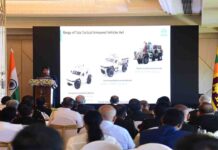By Wasana Nadeeshani Sellahewa
(Commonwealth) _ Smart gadgets and artificial intelligence (AI) are becoming more and more popular in the industrial sector. Numerous tasks may be automated by AI, and the technology behind it are always improving and becoming smarter. Additionally, fewer humans will be needed to make judgments and carry them out as a result of AI and IoT.
One thing is certain: the manufacturing business will never be the same if things continue to develop as they have so far. What impact will AI and IoT have on the manufacturing labor market, though? How can they make it better? Will there be too few jobs in manufacturing? One of the key advantages of AI and IoT is cost optimization, which begins with fewer human hours. AI is capable of organizing machines that operate continuously.
It also involves more than simply machinery. AI can predict the amount of resources required based on the anticipated volume of sales through predictive analysis. Through sensors, AI and IoT may also collaborate to monitor the production process and identify, resolve, and avoid bottlenecks. These devices don’t require ongoing human input after everything is set up and ready to go.
Another method that predictive analysis performed by an AI directly affects industrial jobs is through predictive maintenance. AI can foretell a component’s failure when and how using sophisticated machine learning. The more information you provide it, the more accurate failure predictions it will produce.
This not only lowers costs right away by avoiding bigger failures via maintenance, but it also lowers losses brought on by unforeseen breakdowns. Because your AI would have forewarned you of a failure, you wouldn’t need to shut down a computer for days (or weeks).
Your repairs crew will also be more successful as a result of being able to concentrate on planned, preventative maintenance rather than restoring broken equipment. You may boost efficiency and optimize production with this technique. Both IoT and human operators can utilize it. This is accomplished via machine learning algorithms, which develop relationships between your workers and your equipment’ sensors to detect productivity improvements. AI may provide your operators real-time suggestions to increase output based on this knowledge.
Long before they became a component of the Internet of Things, industrial robots were used in the manufacturing sector. Industrial robots, despite the potentially enormous investment required, are typically used in conjunction with humans to maximize output. Cobots, or collaborative robots, are already available to assist people in monotonous chores or perhaps to completely replace them. These robots are more versatile and adaptive than industrial robots while also requiring a smaller initial investment. Cobots can be readily overseen and reprogrammed thanks to AI. Cobots are frequently a fantastic alternative to replace workers on manufacturing lines since they are repetitious, reducing the risk of accidents and boosting output.
One of the most cutting-edge ways that AI and IoT will directly affect industrial jobs is computer vision. It’s also one of the least expensive methods! Punch-in systems may be utilized with HD cameras to verify employee work time. Your AI can detect machine flaws, manage quality control, and monitor production using machine vision.
Health and safety hazards can also be avoided with machine vision. It may detect employees who are working without the proper safety gear and lower the danger of contamination. The AI has the ability to restrict access to specific people and even halt production when it detects a problem.
Machine vision may be used to track your parts and raw materials as well as interpret text and barcodes. This can benefit you in several ways, including
In the industrial industry, AI and IoT are displacing humans, but they are also creating new employment in their production, oversight, and maintenance. So which direction is the balance shifting?
In the 1960s, more than 10% of Americans were employed in manufacturing. That percentage is now only 4%. Factory workers are being gradually but methodically replaced by machines thanks to AI and IoT, and this tendency will only grow.
To fully realize the potential of the Internet of Things, much work remains. To make IoT as functional as possible, a lot of code must be developed, data must be scraped, and applications must be created. Humans are then required to develop and construct the robots.
















